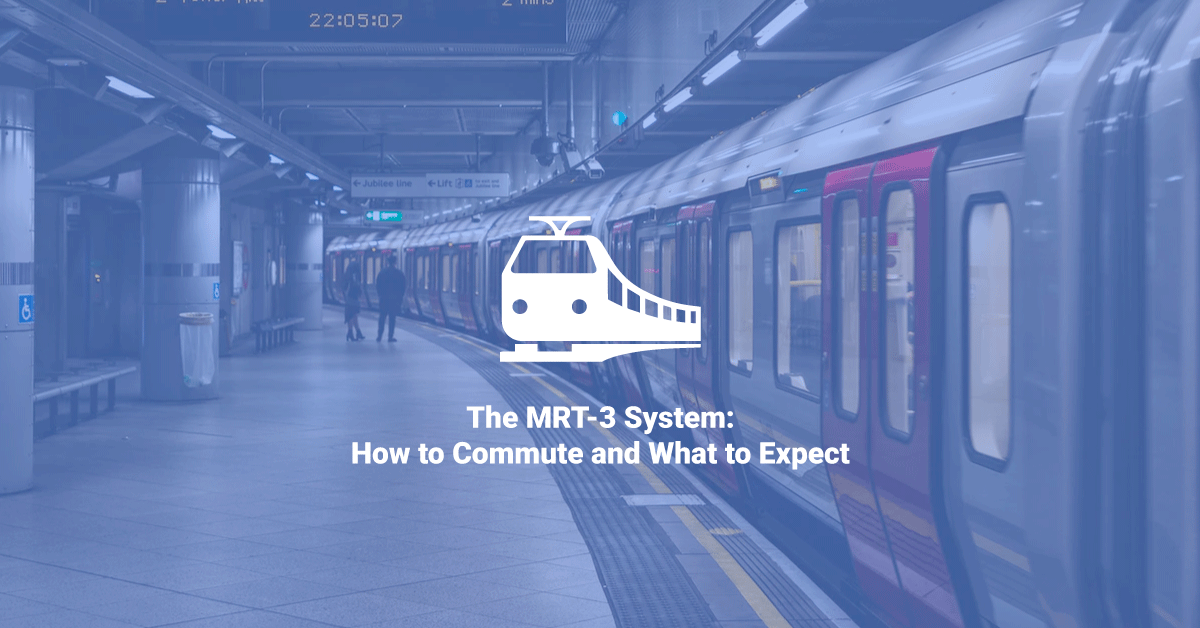Living in Metro Manila means having to endure and pass through its busy streets to get where you want to be. One of the main roads is EDSA, which passes through many important points of interest, from Pasay to Quezon City. Being one of the primary roads, EDSA is also the most congested, with more than 400,000 vehicles traveling through EDSA every day!
Instead of dealing with the traffic by riding your car or commuting via bus, another way to get from place to place through EDSA is by riding the Metro Rail Transit System, or MRT. It is a cheap, easy-to-do, and quick mode of transportation to beat the traffic. In this handy guide, we will help you become a pro commuter by mastering the basics of the MRT system.
The MRT System Route
Starting from the north station, the MRT line travels through Quezon City to Pasay City with 13 stations altogether. The trip for South-bound passengers goes like this, in chronological order:
Quezon City: North Avenue
Quezon Avenue
GMA-Kamuning
Araneta-Cubao
Santolan-Annapolis
Pasig City: Ortigas
Mandaluyong: Shaw Boulevard
Boni
Makati City: Guadalupe
Buendia
Ayala
Magallanes
Pasay City: Taft Avenue For North-bound passengers, the trip is just the reverse, starting from Taft Avenue and ending at North Avenue.
How to Ride the MRT Train
- Pass through the security check. From your starting point, enter the station entrance through the security check. Have yourself frisked and your bag checked by the security guard.
- Secure a train ticket. These tickets can be purchased from manned ticket counters or at automated vending machines at the station. You can either buy a Single Journey Ticket or a Stored Value Ticket. A Single Journey Ticket is a one-time-use ticket that is valid only on the day of purchase, ranging from P13 to P28 depending on your starting and ending station. A Stored Value Ticket is a multiple-use card that costs P100 and is valid for 3 months. You should also consider buying a Beep Card, a reloadable card that you can use for fare payments in Manila’s different railways, including the LRT-1 and LRT-2. You can even use your Beep Card to pay toll payments and purchases in some retail establishments. Discount tickets and Beep Concessionary Cards are also available for students, senior citizens, and persons with disability (PWDs).
- Enter the train station. Tap your card on the designated space in the turnstile and enter the train station. Proceed to one of the platforms and wait for the train to arrive. Neatly fall into two lines only.
- Board the train. Once the train arrives, let the descending passengers alight first from the train before entering. Find a seat or a spot with something that you can hold onto.
- Ride the train and wait for your stop. The MRT train driver will announce every approaching station through the train speakers. There are also name signs that you can see at every station.
- Alight the train and exit the station. At the exit turnstile, Single Journey Tickets need to be inserted into a slot, while Stored Value Tickets and Beep Card are tapped on the designated space.
What To Expect From Your MRT ride
While being an affordable way of traveling across EDSA, the MRT system has its share of problems and points for improvement. Here are some things that you need to know and expect with your MRT commute:
- The rush hour gets super hectic. Whether the morning (6:00 – 10:00 AM) or the after-work (4:00 – 8:00 PM) rush, the MRT is not a very attractive commute during these hours. The lines can get incredibly long, and the stations and trains are jam-packed with passengers.
- Some stations are less crowded than others. Stations like Araneta-Cubao and Ayala are infamous for bringing in lots of passengers, especially during peak hours. Stations like GMA-Kamuning and Magallanes get smaller crowds, making it a bit easier to ride the train.
- Travel time greatly varies. On good days, it is possible to travel from end to end of the MRT is just around 40 minutes. But the travel time is greatly extended during peak times when there are lots of passengers aboard.
- The train sometimes slows down and glitches. Less now than before, but the MRT train is still prone to glitches like slowing down or stopping abruptly. This further contributes to the varying travel time, such that end to end can take more than an hour long.
Despite these problems that the system is struggling with, the MRT is still a convenient and practical way of getting around the metro for many people. For an easy and hassle-free commute, all it takes is mastering the basics of the MRT train system, a bit of luck, and a Beep Card.

